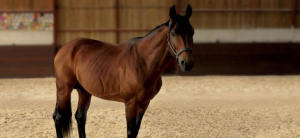 All the horses in the barn get the same amount of feed every day; it makes feeding time much simpler. The warmbloods look super. Their weight is good, and their coats are gleaming. However, the one Thoroughbred in the barn who arrived a little thin six months ago has not put on any weight. In fact, he has lost body condition. He is getting grain just like the other horses, so what could be wrong? A veterinarian has thoroughly examined the horse and nothing appears to be wrong. Could it be as simple as insufficient caloric intake? What kind of changes can be made to his feeding program to encourage weight gain?
All the horses in the barn get the same amount of feed every day; it makes feeding time much simpler. The warmbloods look super. Their weight is good, and their coats are gleaming. However, the one Thoroughbred in the barn who arrived a little thin six months ago has not put on any weight. In fact, he has lost body condition. He is getting grain just like the other horses, so what could be wrong? A veterinarian has thoroughly examined the horse and nothing appears to be wrong. Could it be as simple as insufficient caloric intake? What kind of changes can be made to his feeding program to encourage weight gain?
Sometimes, getting a thin horse to gain weight is simply a matter of increasing the caloric density of the diet. Other times, the diet may need to be higher in calories because of a medical, psychological or environmental problem.
What makes a horse a hard keeper?
The metabolic rate determines whether a horse is an easy or hard keeper. The variation between horses can be extreme.
Metabolism is the speed at which the body burns fuels for energy in order to maintain normal body functions. A slow metabolism can function on little input of fuel energy. Conversely, a fast metabolism needs a higher caloric intake in order to function properly. In general, members of certain breeds have faster metabolisms and need more food to maintain body condition than members of other breeds. For example, Thoroughbreds usually eat more per pound of body weight than draft horses. There is also variety within a breed. For instance, some Thoroughbreds are easy keepers while others require intense management to maintain body weight.
Temperament
Temperament often goes hand in hand with metabolic rate. A nervous horse may require more calories than a calm tempered one to maintain the same body condition. A tense horse may spend more time stall walking or weaving while the calm horse conserves energy stores.
A thin horse requires energy in the diet to ensure proper functioning of body processes and to build fat stores. Energy is a general term, yet many horsemen associate the word energy with mental energy. In this article, energy refers to the potential of a feed to fuel body functions and exercise. Weight gain in the horse can be attributed to protein or fat deposition. When a horse does not have enough calories or protein in the diet, the body will break down its own muscle tissue and deplete much of the adipose tissue or fat.
This results in emaciation with poor muscle definition and protruding bones. When the diet has excessive calories, the body will build muscle and adipose stores. The simplified solution to poor weight is to increase the caloric content of the diet while ensuring adequate protein content. The three nutrients which can supply energy to increase the caloric content of the diet in the horse are fiber, starch and fat. Each nutrient is utilized for energy in a slightly different way in the body which, depending on the horse, can be advantageous or not.
Fiber
Of the three major energy sources for the horse, fiber is the most important, most underestimated and the safest. Fiber is the major component of grass and hay. Some horses can maintain their weight on fiber sources alone. For the hard keeper, however, fiber alone will not maintain weight, but there are fiber feeding strategies that can increase the ability of the horse to derive energy from fiber.
The fiber portion of a plant consists primarily of cellulose, hemicellulose and lignin. Residing in the intestinal tract of the horse (cecum and colon) are billions of microbes which break down the fiber into a physiologically usable form, volatile fatty acids. These volatile fatty acids pass into the bloodstream of the horse where they can be transported to sites which need energy or tucked away as energy stores in the form of adipose tissue or muscle glycogen. Most of the cellulose and hemicellulose is easily digested by intestinal microbes (digestible fiber); the lignin is not digestible (indigestible fiber). Therefore, as lignin content of a feed increases, digestibility decreases.
Digestibility
As digestibility plummets, less energy is available to the horse. Lignin is the carbohydrate which gives the most structural support to a plant; rigid-stalked vegetation will contain more lignin than limp-stalked plants. For instance, there is little lignin in the soft leaves of the alfalfa plant (lucerne), but a much higher content of lignin is present in the rigid stem. If there is more leaf and less stem, or if the stems have not matured to become stiff and inflexible, the digestible fiber portion of the hay will be higher. A young plant harvested prior to maturity will have a lower lignin content than a plant allowed maturing before cutting.
Fresh Grasses
Fresh green spring grass is much higher in digestible fiber than parched summer grass. A horse can draw more energy from a high quality, early harvested hay (whether grass or legume) than a mature hay. Pasture is also a source of fiber. The digestibility of pasture is usually higher than hay because the curing process of haymaking results in digestible fiber losses.
When comparing the energy content of alfalfa (lucerne) and grass hays, alfalfa hay can provide a horse with more energy than grass hay of similar quality. On the other hand, low quality alfalfa hay which is composed of more stem than leaf is not a rich source of energy. More energy could be provided with grass hay that has very little stem and an abundance of visible green grass blades. Maximizing forage quality should be the first adjustment when trying to achieve weight gain.
Alternative Fibers
When quality fiber in the form of pasture or hay is not available, or if the horse does not readily eat hay, there are alternative fiber sources that may add fiber energy to the diet. The most common are beet pulp, soy hulls, wheat bran and alfalfa pellets or cubes. Beet pulp is about 80% digestible fibers (as compared to 50% for the average hay).
Soy hulls are a by-product of soybean production. Soy hulls are the skin of the bean (not the husk or pod) that is knocked off before oil is extracted from the bean. Commonly used in commercial horse feeds, soy hulls are slightly lower in digestibility than beet pulp. If a commercially designed horse feed has soy hulls listed as one of the primary ingredients, it will be a good source of highly digestible fiber.
Wheat bran is commonly thought of as a fiber source, but it actually has about the same amount of fiber as oats. It is a rich energy source because it is abundant in digestible fiber and starch. Wheat bran contains a large quantity of phosphorus, which can potentially disrupt the calcium and phosphorus ratio in the diet. On the flip side, wheat bran complements a diet high in alfalfa hay because of the calcium in the alfalfa.
Supplements
When good quality forage is unavailable or if hay intake is minimal or difficult for a horse, the diet of the horse can be supplemented with alfalfa pellets or cubes. Both products are made with alfalfa that has been harvested when digestible fiber is at its peak. Thus, alfalfa pellets and cubes provide energy to the horse. Alfalfa hay is often combined with timothy hay or whole corn plants to create cubes lower in protein and calcium content than pure alfalfa cubes. Caution is necessary when feeding pellets as some hay should still be fed if possible because of the important laxative effect of long fiber in the diet.
Supplements are available that may help with fiber digestion if the horse has a problem with the balance of the microbes in the cecum or colon. Yeast has been researched and found to improve fiber digestibility. Some commercial feeds come with yeast already added or yeast products are sold which can be top-dressed to the ration.
Probiotics are also thought to help improve fiber digestibility. Because the microbial population in the hindgut can shift out of balance, researchers believe the addition of more bacteria in the form of a probiotic restores bacterial stability, thereby improving digestion of forage. Also, commercial products are available that combine yeast and a probiotic for maximal regeneration and efficiency of the microbial population.
Starch
When a horse cannot maintain weight on hay or grass alone, the addition of starch in the form of grains has been the most traditional method of increasing the energy density of the diet. Obtaining energy from starch is actually more efficient because it is a simple enzymatic process. The end result has to feed fewer pounds of grain than hay to supply the equivalent amount of energy to the horse. Grains are an excellent source of starch for the horse, but they can be hazardous to the digestive tract. The starch molecules found in grains are complex polysaccharides that, when attacked by the enzyme amylase in the small intestine, can be broken down to very simple sugars, which are easily absorbed into the bloodstream.
From there, the sugars in the blood are distributed to where they may be needed by the body for energy or they may be stored as muscle glycogen or adipose tissue for future use. The limiting factor to starch digestion in the horse is the production of amylase in the intestinal tract. Amylase production has been found to be quite variable among horses.
Fermentation
Without sufficient amylase in the intestinal tract, much of the starch in the diet passes through to the large intestine where it is fermented. This is undesirable for two reasons. First, the amount of energy produced from starch by fermentation is less than the amount produced by enzymatic means. Second, excessive fermentation of starch drops the pH of the hindgut, which will decrease the efficiency of the bacteria that digest fiber and produce energy.
To further complicate the situation, not all starch molecules are created equal. Studies have shown that the oat starch molecule is small and easily digested by amylase. On the other hand, the starch molecules of corn and barley are large and not easily digested. If the corn or barley is treated with heat, it changes the nature of the starch molecule and makes it more easily digested by amylase.
Therefore, it is better to feed steam rolled or cooked barley and steam flaked or super flaked corn than their untreated counterparts. The process of pelleting involves heat which results in improved enzymatic digestion of corn; extruding improves it even more. When deciding on a commercial mix for the horse, look for one that uses grains that have been processed to allow for optimal digestion in the small intestine of the horse.
Feeding Dangers
While grain is a concentrated source of energy for the horse, there are some inherent dangers with feeding excessive amounts. When desperately trying to get a difficult horse to gain weight, it is often tempting to keep increasing the amount of grain being fed. Unfortunately, there is a point of no return when a horse gets too much grain in its digestive tract and the delicate balance of the microbial population is upset.
At this point, many horses also lose their appetite for forage and the situation worsens. No matter how much grain you feed, the horse will probably lose more weight. The minimal amount of forage a horse requires is 1% of its body weight. Therefore, a 1000 pound (450 kilogram) horse needs a minimum of 10 pounds (4.5 kilograms) of hay per day in order to maintain a reasonable balance of the microbial population. The rest of the diet should be designed around the minimal forage requirement.
Too Much Starch
The danger of feeding too much starch occurs because certain horses have a sensitivity to starch overload, perhaps precipitated by low amylase production or large meals of unprocessed grains. The cascade of problems begins with too much grain passing from the small intestine to the cecum and colon.
The starch in the grain is fermented by bacteria. The by-product of starch fermentation is lactic acid, a substance which alters the pH of the hindgut to be more acidic. The acidic environment kills the bacteria. As the bacteria die they produce endotoxins and laminitis trigger factors which can cause colic.
The laminitis trigger factors that pass into the blood can also induce laminitis. Horses that suffer starch sensitivity should not be given high grain diets. Kentucky Equine Research has developed EquiShure, a hindgut buffer to prevent acid build-up in the large intestine and maintain normal digestive function for horses on high-grain diets or those requiring weight gain.
Enzymes
As with forage digestion, supplements designed to aid in starch digestion or utilization have been developed. Although there has not been definitive research performed on the benefit of adding enzymes to the diet, the theory is well founded. If amylase is the limiting factor in small intestinal grain digestion, adding amylase to the feed may reduce the amount of grain channeling into the cecum and colon. Although there are a few feeds and supplements containing enzymes on the market, their efficacy is still questionable. Enzymes are proteins which are sensitive to acidic environments.
Such environments denature the enzymes thereby making them inactive. All feed passes through the acidic stomach before reaching the small intestine, so how much enzyme will actually reach the intestine intact and not be denatured? More research is necessary to establish the efficacy of feeding supplemental enzymes. Supplemental chromium may improve the metabolism of starch. The action of chromium does not have as much to do with aiding digestion as it does with the way the body handles the rise in blood glucose resulting from starch digestion and the consequential rise in insulin. Chromium yeast has been effective in reducing the incidence of chronic founder in some ponies and the incidence of chronic tying up in some horses with intolerance to high grain diets.
Fat
Almost all performance horses have some type of fat added to their diet, whether it is a slug of corn oil, a scoop of rice bran, a handful of linseed or a commercial high fat feed. Traditionally, fat was added to give the coat a healthy shine. However, recent research has brought to light an even better reason for feeding fat – it is an excellent energy source. Added dietary fat has proven to be an invaluable tool for packing weight on a hard keeper. As well as being a highly concentrated energy source, fat has several other advantages. Energy from fat does not make a horse flighty like energy from grain, and horses on high fat diets exhibit more endurance. There are differences between various fat sources which make one more useful than another in different circumstances.
Differences
There are major differences between vegetable fats (oils) and animal fats. The primary disadvantage of feeding animal fats is palatability; oils are much more appealing to the horse, although many commercial animal fats have flavorings added to improve the taste.
Corn oil typically has remained the star in palatability studies, but most oils are palatable when corn oil is not offered as a choice in these studies. The second obstacle is digestibility. Animal fat is only about 75% digestible while oil is closer to 95%. With small intakes of animal fat the digestibility difference is insignificant, but when higher levels are fed, that portion of indigestible fat can start to play havoc with the balance of microbes in the hindgut. Loose, runny feces are a sign that improper fat digestion is occurring. A third obstacle involves the long term maintenance of horses on animal fat. Horses may tire of the flavor and go off of an animal fat product before refusing a vegetable oil.
Common Fat Sources
Other common sources of fat include rice bran, linseed, sunflower seeds, full fat soybeans and coconut meal (copra meal). Rice bran is an excellent product for improving body condition and topline of thin horses because it is a combination of rice oil and highly digestible fiber. However rice bran will rapidly go rancid unless it is stabilised by extrusion, and unstabilised products should not be fed. Look for research proven stabilised rice bran which is a popular horse feed supplement in many countries. Linseed, sunflower seeds and other seeds can also provide fat in the diet, but a notable problem does arise when feeding vast amounts of seeds. As quantities of seeds fed increases, consumption will frequently slow, sometimes to the point of total refusal. Roasted soybeans are also great in small quantities. However, they will increase the protein percentage of the diet too much if fed in larger amounts.
A high-fat diet is an invaluable tool for achieving weight gain in a skinny horse as long as the gastrointestinal tract of the horse will tolerate the fat. Normally horses have no problem digesting fat as long as it is introduced gradually into the diet. The greatest advantage of using fat as an energy source is that it helps to avoid excessive intakes of grain. Dietary fat works best when fed in conjunction with grain and/or highly digestible fiber sources like beet pulp (not neglecting good quality hay or pasture). Many new feeds are appearing on the markets that incorporate high fat levels (> 6%) with high fiber ingredients like beet pulp or soy hulls.
Conclusion
Some horses are metabolically inclined to be hard keepers. Others have medical, psychological or environmental reasons for having difficulty in maintaining weight. Increasing the caloric intake of a horse is not problematic if careful attention is paid to the feedstuffs offered to the horse. Manipulation of the amount and variety of energy sources will often achieve the ideal body condition on the hard keeper.
Call the hay experts at J & J Hay Farms to discuss your needs and to help select the best hay for your budget and situation.
Article sourced from Kentucky Equine Research.
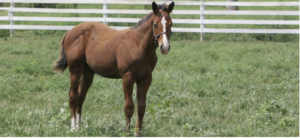 Managing Feed for Weanling and Yearling Horses: Young horses need good-quality feeds to meet their nutrient requirements for growth. In addition, free-choice exercise in large paddocks. Weanlings and yearlings have high requirements for energy, protein, amino acids and minerals in order to grow optimally. If you are using a commercial mixed feed, make sure it is formulated for the growing horse.
Managing Feed for Weanling and Yearling Horses: Young horses need good-quality feeds to meet their nutrient requirements for growth. In addition, free-choice exercise in large paddocks. Weanlings and yearlings have high requirements for energy, protein, amino acids and minerals in order to grow optimally. If you are using a commercial mixed feed, make sure it is formulated for the growing horse.
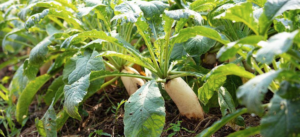 Use of Cover Crops in Horse Pastures:
Use of Cover Crops in Horse Pastures: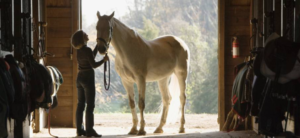 Horse Management for the Spring Season: Do you ride all winter, no matter how deep the snow gets, or do you hang up your saddle at the first cool breeze in autumn? Do you pull your horse’s shoes, blanket him, or keep him in the barn during the cold months? Do you cut his grain ration when he’s not working, or feed more hay to keep him warm? If the winter season has involved any modifications in your horse’s exercise level or feeding plan, you will need to consider the following points as you bring the horse back into work in the spring.
Horse Management for the Spring Season: Do you ride all winter, no matter how deep the snow gets, or do you hang up your saddle at the first cool breeze in autumn? Do you pull your horse’s shoes, blanket him, or keep him in the barn during the cold months? Do you cut his grain ration when he’s not working, or feed more hay to keep him warm? If the winter season has involved any modifications in your horse’s exercise level or feeding plan, you will need to consider the following points as you bring the horse back into work in the spring.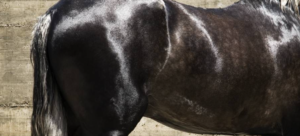 Feed Management to Minimize the Risk of Impaction in Horses: Winter, with its icy water sources and lowered equine activity levels, is one of the riskiest times for horses that tend to develop intestinal impaction. Fresh grass has been replaced in the diet by dry hay; horses tend to drink less when offered very cold water; and with a break in regular training and exercise, they may not sweat enough to feel thirsty. These are all contributing factors to impaction colic. Above all, because they are all conducive to slower movement of ingested material through the digestive tract.
Feed Management to Minimize the Risk of Impaction in Horses: Winter, with its icy water sources and lowered equine activity levels, is one of the riskiest times for horses that tend to develop intestinal impaction. Fresh grass has been replaced in the diet by dry hay; horses tend to drink less when offered very cold water; and with a break in regular training and exercise, they may not sweat enough to feel thirsty. These are all contributing factors to impaction colic. Above all, because they are all conducive to slower movement of ingested material through the digestive tract.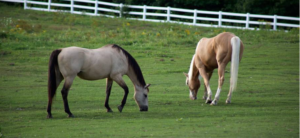 Springtime Weight Gain in Horses: Winter can be hard on horses. When spring arrives, it is not unusual to find that a horse has dropped weight during the coldest months. When the mercury drops, a horse requires more energy to maintain body temperature. Winter is especially challenging for senior horses and young horses, who have a harder time maintaining body temperature. A sound nutrition program and suitable exercise can help remedy loss of condition as winter turns to spring.
Springtime Weight Gain in Horses: Winter can be hard on horses. When spring arrives, it is not unusual to find that a horse has dropped weight during the coldest months. When the mercury drops, a horse requires more energy to maintain body temperature. Winter is especially challenging for senior horses and young horses, who have a harder time maintaining body temperature. A sound nutrition program and suitable exercise can help remedy loss of condition as winter turns to spring.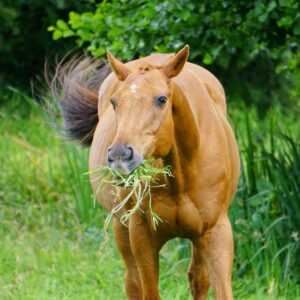 Horse Care in Early Spring: As winter months pass and everyone is looking forward to the first hints of spring weather, horses still need regular cold-season care to stay well-fed and healthy in early spring. Don’t neglect these areas of horse management:
Horse Care in Early Spring: As winter months pass and everyone is looking forward to the first hints of spring weather, horses still need regular cold-season care to stay well-fed and healthy in early spring. Don’t neglect these areas of horse management: All the horses in the barn get the same amount of feed every day; it makes feeding time much simpler. The warmbloods look super. Their weight is good, and their coats are gleaming. However, the one Thoroughbred in the barn who arrived a little thin six months ago has not put on any weight. In fact, he has lost body condition. He is getting grain just like the other horses, so what could be wrong? A veterinarian has thoroughly examined the horse and nothing appears to be wrong. Could it be as simple as insufficient caloric intake? What kind of changes can be made to his feeding program to encourage weight gain?
All the horses in the barn get the same amount of feed every day; it makes feeding time much simpler. The warmbloods look super. Their weight is good, and their coats are gleaming. However, the one Thoroughbred in the barn who arrived a little thin six months ago has not put on any weight. In fact, he has lost body condition. He is getting grain just like the other horses, so what could be wrong? A veterinarian has thoroughly examined the horse and nothing appears to be wrong. Could it be as simple as insufficient caloric intake? What kind of changes can be made to his feeding program to encourage weight gain?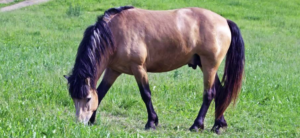 Toxic Plants for Horses: Meadow Saffron – Why are horses entice by it? Some owners find tranquility in watching their horses graze. Others size up the same scene with uncertainty, even worry, as they tally the potential dangers that lurk in fields and fencerows: buttercups, acorns, red maple leaves, and black walnut bark. Which level of concern is most fitting? A new study on “poison preference” suggests that the reality may lie somewhere between blissful ignorance and unflagging vigilance.*
Toxic Plants for Horses: Meadow Saffron – Why are horses entice by it? Some owners find tranquility in watching their horses graze. Others size up the same scene with uncertainty, even worry, as they tally the potential dangers that lurk in fields and fencerows: buttercups, acorns, red maple leaves, and black walnut bark. Which level of concern is most fitting? A new study on “poison preference” suggests that the reality may lie somewhere between blissful ignorance and unflagging vigilance.*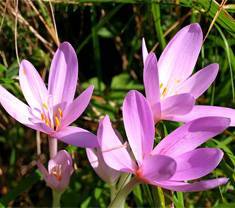 Above all, the meadow saffron is not a true crocus, like those that come as signals of spring. As meadow saffron grows, broad leaves erupt from the ground, similar to those of the more familiar garden tulip. In early fall, once the leaves have died back, flowers erupt from the corms. As this photograph taken by Enrico Blasutto shows, each stalk produces a single flower that is typically light pink or purple. All parts of the plant are toxic.
Above all, the meadow saffron is not a true crocus, like those that come as signals of spring. As meadow saffron grows, broad leaves erupt from the ground, similar to those of the more familiar garden tulip. In early fall, once the leaves have died back, flowers erupt from the corms. As this photograph taken by Enrico Blasutto shows, each stalk produces a single flower that is typically light pink or purple. All parts of the plant are toxic.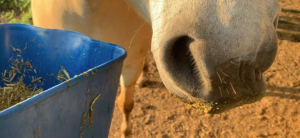 What are good forage choices for aged horses with dental problems? Armed with a battery of six molars on each quadrant of the skull, horses with sound dentition process forages efficiently. Also called cheek teeth, the molars pulverize forages, increasing the surface area of the forage particles. Thus, allowing the most nutrients to be extracted from them as they flow through the gastrointestinal tract. When horses age, dental diseases crop up more frequently. As horses creep toward and into their 20s, molars begin to wobble in their sockets and eventually fall out. Special consideration must be given to meeting forage requirements when this happens.
What are good forage choices for aged horses with dental problems? Armed with a battery of six molars on each quadrant of the skull, horses with sound dentition process forages efficiently. Also called cheek teeth, the molars pulverize forages, increasing the surface area of the forage particles. Thus, allowing the most nutrients to be extracted from them as they flow through the gastrointestinal tract. When horses age, dental diseases crop up more frequently. As horses creep toward and into their 20s, molars begin to wobble in their sockets and eventually fall out. Special consideration must be given to meeting forage requirements when this happens.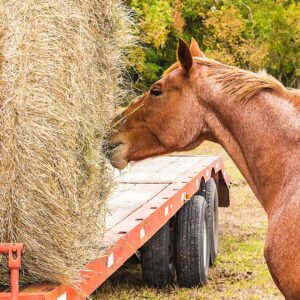 Aside from pasture, hay is the predominant forage consumed by horses. So, its value in equine diets is unquestionable. During certain times of year, hay may be the only forage available to horses. Therefore the selection of well-preserved hay harvested at the appropriate stage of maturity is critical.
Aside from pasture, hay is the predominant forage consumed by horses. So, its value in equine diets is unquestionable. During certain times of year, hay may be the only forage available to horses. Therefore the selection of well-preserved hay harvested at the appropriate stage of maturity is critical.